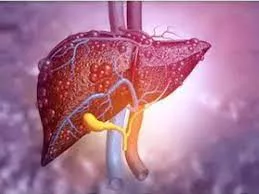A study on genes of two different mouse models with liver disease has led to a better understanding of liver scarring by Austrian researchers. Scarring, or fibrosis, can lead to liver failure, and the study identified genetic drivers of the disease.
Researchers from the Medical University of Vienna and the Center for Molecular Medicine (CeMM) examined gene activity in mouse models to understand the scarring process. Published in iScience, the study revealed dynamic molecular processes that could help reverse liver fibrosis.
“Some genes were upregulated during the progression of the disease and downregulated during regression,” the researchers found. They also identified four “hub” genes with links to fibrosis, portal venous pressure, histological data, and blood markers, which could be developed into clinically relevant biomarkers.
The research was conducted on patients with liver diseases to confirm the results. Understanding the genetic drivers of liver scarring could lead to more effective treatments for the disease, providing hope for those at risk of liver failure.

 Community Health Initiatives: How Local Engagement Improves Overall Well-being
Community Health Initiatives: How Local Engagement Improves Overall Well-being Unlocking the Benefits of Medicare Part D Plans for 2025
Unlocking the Benefits of Medicare Part D Plans for 2025 Comparing Ascoril D Plus with other cough syrups and expectorants on the market
Comparing Ascoril D Plus with other cough syrups and expectorants on the market AstraZeneca’s Covishield To Cause Rare Yet Serious Side Effects
AstraZeneca’s Covishield To Cause Rare Yet Serious Side Effects Reinforce Your Smile: Discover the Benefits of Hydroxyapatite Toothpaste
Reinforce Your Smile: Discover the Benefits of Hydroxyapatite Toothpaste Shilajit for Women: Balancing Hormones and Supporting Wellbeing
Shilajit for Women: Balancing Hormones and Supporting Wellbeing Learn All About Truck Accident And What a Truck Accident Lawyer Can Help
Learn All About Truck Accident And What a Truck Accident Lawyer Can Help Fever: Symptoms, Treatments, Types, and Causes
Fever: Symptoms, Treatments, Types, and Causes